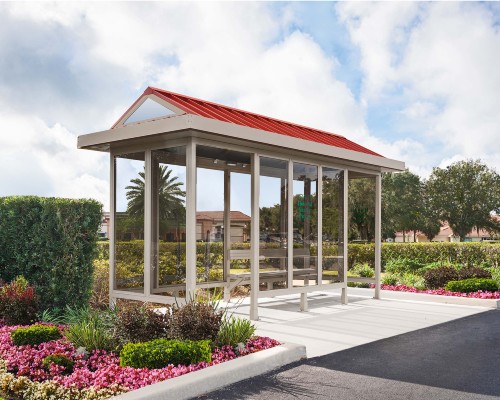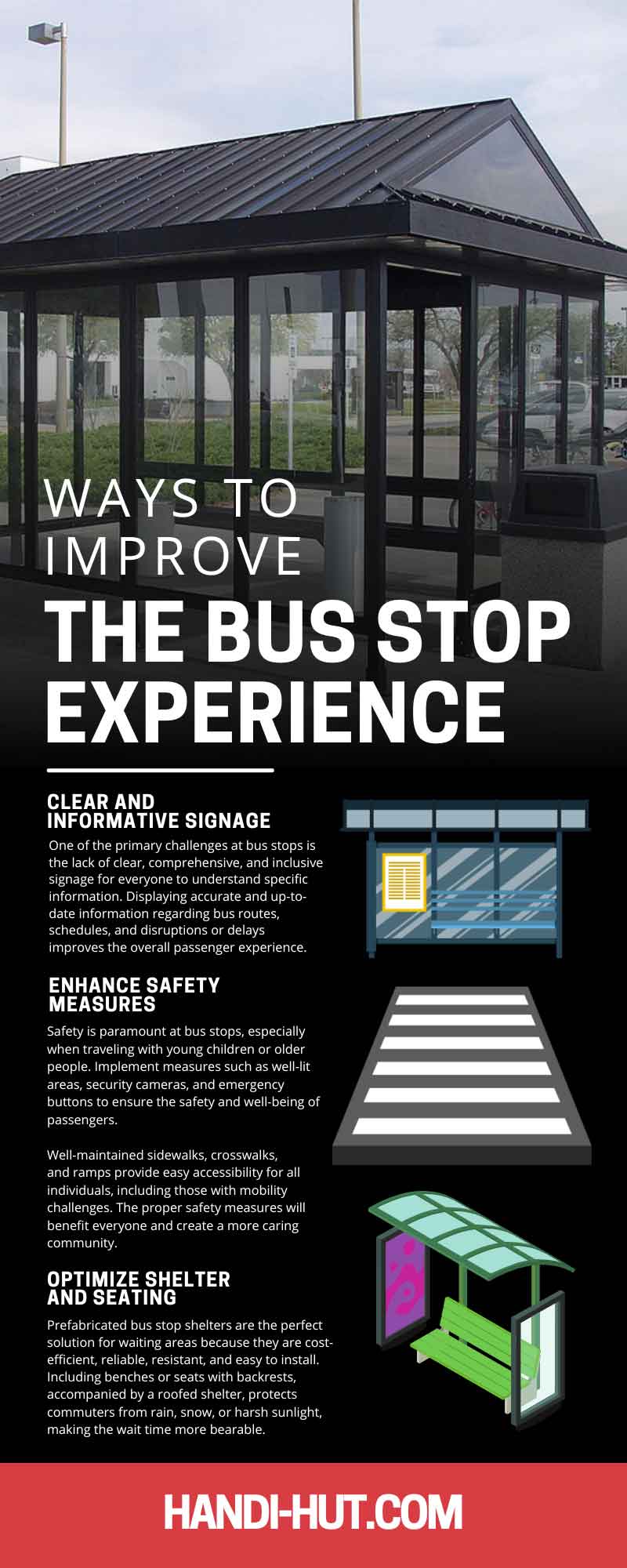
Public transportation plays a vital role in ensuring the smooth flow of urban life and providing people with the necessary means to get where they need to be. One of the main focuses of any efficient and user-friendly transportation system, whether a smaller or larger city, is the bus stop.
A well-designed and welcoming bus stop makes the commute more convenient and enhances the overall experience for passengers through safety and convenience. A large percentage of a city’s population relies on this service, and keeping bus stops functional and efficient will positively impact the social quality of life.
These eight ways to improve a bus stop experience will ensure a seamless and enjoyable journey for everyone who chooses or requires public transportation. These suggestions will help transform a commuter’s waiting time into an opportunity to enjoy the outdoors.
Clear and Informative Signage
One of the primary challenges at bus stops is the lack of clear, comprehensive, and inclusive signage for everyone to understand specific information. Displaying accurate and up-to-date information regarding bus routes, schedules, and disruptions or delays improves the overall passenger experience.
Incorporate digital displays or easy-to-read boards that offer real-time information, allowing commuters to plan their journeys effectively. Keeping simple and precise indications with protected boards and digital screens will improve communication and prevent damage from weather and usage. Understanding that people have different needs, abilities, and experiences with public transportation will help people in charge implement viable solutions for everyone.
Enhance Safety Measures
Safety is paramount at bus stops, especially when traveling with young children or older people. Implement measures such as well-lit areas, security cameras, and emergency buttons to ensure the safety and well-being of passengers.
Include easy access to information like where to stand before entering the bus to minimize accidents, letting people out first, and common courtesy actions. To develop a better understanding of how a service works and a safer environment, shelters should have displays with this information.
Well-maintained sidewalks, crosswalks, and ramps provide easy accessibility for all individuals, including those with mobility challenges. The proper safety measures will benefit everyone and create a more caring community.
Optimize Shelter and Seating
Adequate shelter from inclement weather as well as comfortable seating are fundamental elements of a good bus stop. Providing well-designed, weather-resistant shelters with ample seating encourages passengers to choose public transportation.
Prefabricated bus stop shelters are the perfect solution for waiting areas because they are cost-efficient, reliable, resistant, and easy to install. Including benches or seats with backrests, accompanied by a roofed shelter, protects commuters from rain, snow, or harsh sunlight, making the wait time more bearable.
Improve Connectivity and Technology
In our modern world, technology can significantly enhance the bus stop experience with constant updates and targeted improvements. Provide amenities such as Wi-Fi connectivity, USB charging ports, and interactive touch screens that allow passengers to access maps, transit apps, and real-time updates.
Most people heavily rely on their technological gadgets to navigate a city, pay for services, and gather information, which makes charging ports fundamental. These features enable commuters to stay connected, be productive, and make informed decisions while waiting for their buses.
Technology keeps evolving quickly, and proper implementation in public areas to keep up with this evolution is essential.
Amenities and Services
Consider incorporating essential amenities and services that improve the bus stop experience to make it more enjoyable. Install trash cans and recycling bins to maintain cleanliness and promote environmental responsibility.
Adding bike racks, bike-sharing stations, and dedicated parking spaces will allow for different transportation options to reach the stop. Convenience and safety will encourage people to use public transportation systems.
Green Spaces and Landscaping
Including green spaces and landscaping at bus stops enhances the aesthetics and contributes to a healthier and more pleasant environment. Planting trees, shrubs, and flowers provides shade, improves air quality, and creates a peaceful ambiance.
These elements can transform an otherwise dull and simple bus stop into a refreshing and inviting space. Sometimes there is no other option than public transportation, and a beautiful outdoor waiting area will have a positive impact.
Artistic Installations and Design
Artistic installations and thoughtful design can uplift the overall aesthetic appeal of a bus stop and turn it into something more special and interesting. Collaborate with local artists to create murals, sculptures, or interactive displays that reflect the community’s culture and heritage.
Engaging artwork sparks conversation and cultivates a sense of pride and ownership among commuters living around the same areas. A bus stop will remain cleaner, tidier, and more functional when people can relate to and enjoy meaningful artistic installations.
Representing the culture and history of a place with images and colorful murals can become an educational and inspiring extravaganza, especially when people have time to sit and enjoy. Interactive installations are not necessarily artistic but could be entirely functional, like replacing some benches with activities for kids.
Community Engagement and Feedback
To truly improve the bus stop experience, involving the community and learning about what they think and how they interact with a service is crucial. Seek feedback from commuters, community organizations, and transit authorities to understand their needs and preferences.
Conduct surveys, hold public meetings, or establish online forums to gather and analyze valuable insights that could improve the overall experience. By involving users, you can foster a sense of inclusivity and ensure that the bus stop design aligns with the community’s requirements.
A positive and convenient bus stop experience goes beyond just peacefully and patiently waiting for a bus to arrive at a certain time. By implementing solutions like optimizing shelters, safety measures, connectivity, amenities, incorporating green spaces, and artistic installations, a bus stop can turn into a safe, inviting, and enjoyable space.
A well-designed bus stop benefits the commuters and contributes to the vitality and quality of the urban environment. Working together to make public transportation more attractive will benefit everyone equally and make a city more functional.

